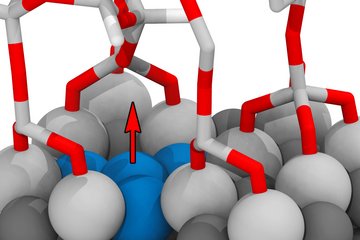All genres
41.
Talk
Helium irradiation-induced effects on tensile properties of interface-containing bi-material nanostructures. INASCON 2015
, Basel, Switzerland (2015)
42.
Poster
Ag segregation induced nanofaceting transition of an asymmetric tilt grain boundary in Cu and its impact on plastic deformation mechanisms. PICO 2019, Vaals, The Netherlands (2019)
43.
Poster
Microstructure and deformation behavior of particle-strengthened CoCrFeNi-based alloys. SPP Meeting , Karlsruhe, Germany (2019)
44.
Poster
Ag segregation induced nano-facet formation at an asymmetric Cu grain boundary. Young Materials Researcher Day YMRD , Karlsruhe, Germany (2018)
45.
Poster
Ag segregation induced nano-facet formation at an asymmetric Cu grain boundary. 2nd Materials Chain International Conference MCIC 2018, Bochum, Germany (2018)
46.
Poster
Effect of the atomistic grain boundary structure on dislocation interaction in copper. Gordon Research Conference (GRC) 2016, Thin Film & Small Scale Mechanical Behavior
, Lewiston, ME, USA (2016)
47.
Poster
Beam induced atomic migration at Ag containing nanofacets at an asymmetric Cu grain boundary. European Microscopy Congress (EMC) 2016
, Lyon, France (2016)
48.
Thesis - PhD
Structure, chemistry and nanomechanics of grain boundaries in Cu–Ag alloys. Dissertation, Ruhr-Universität Bochum (2021)











